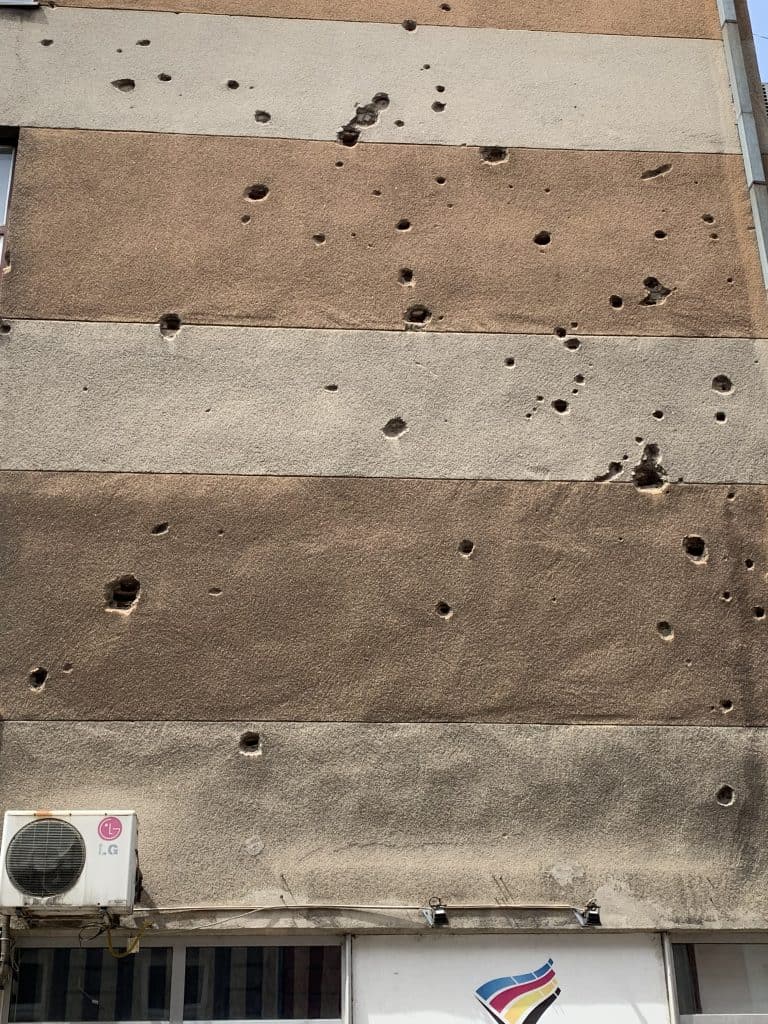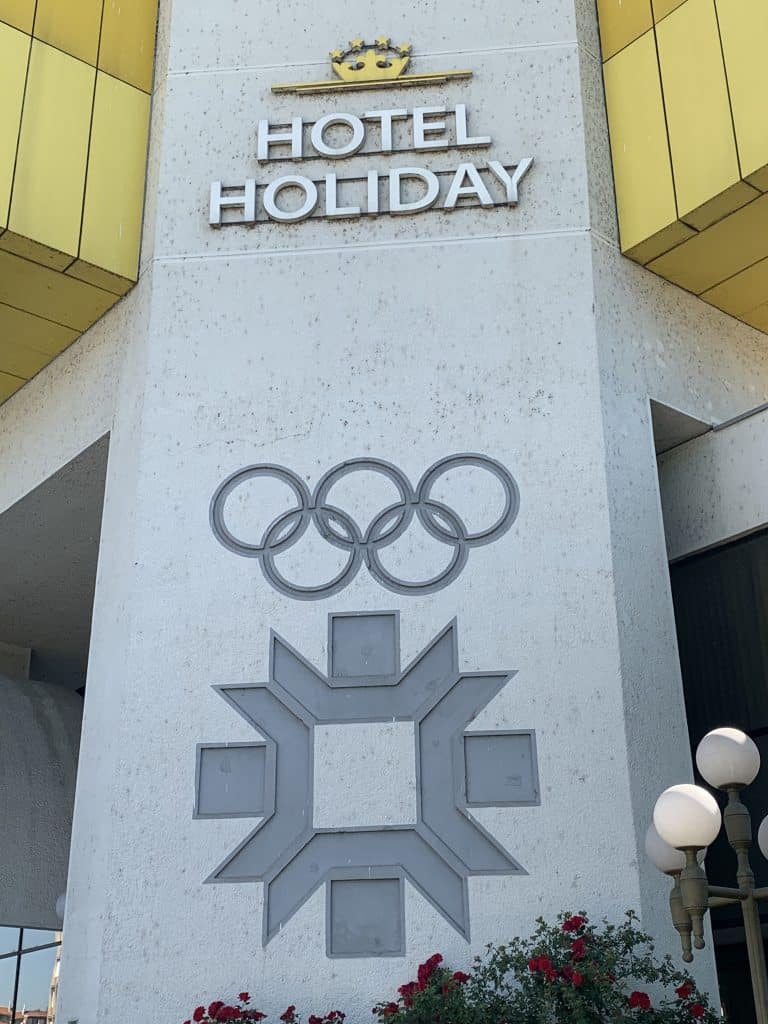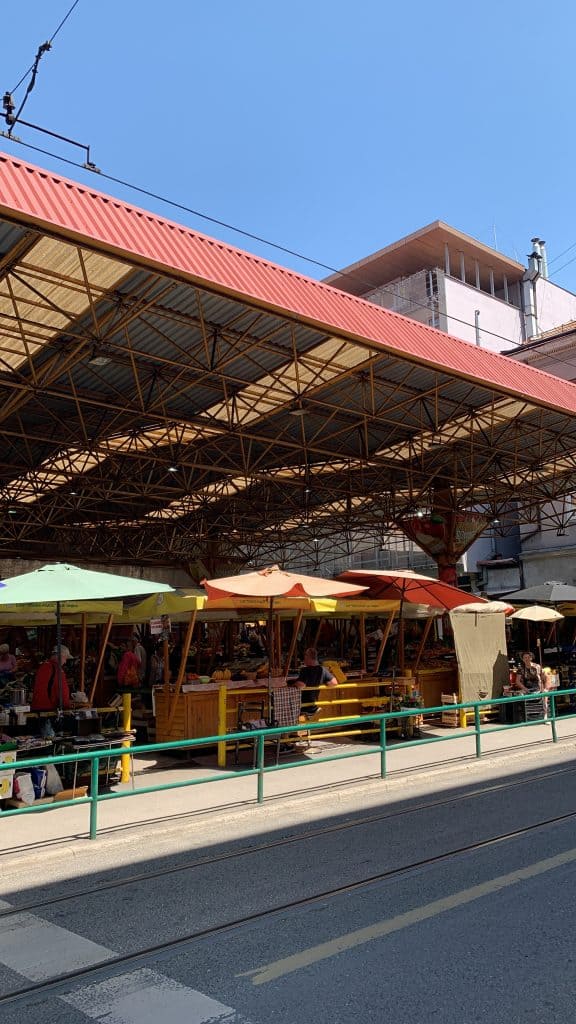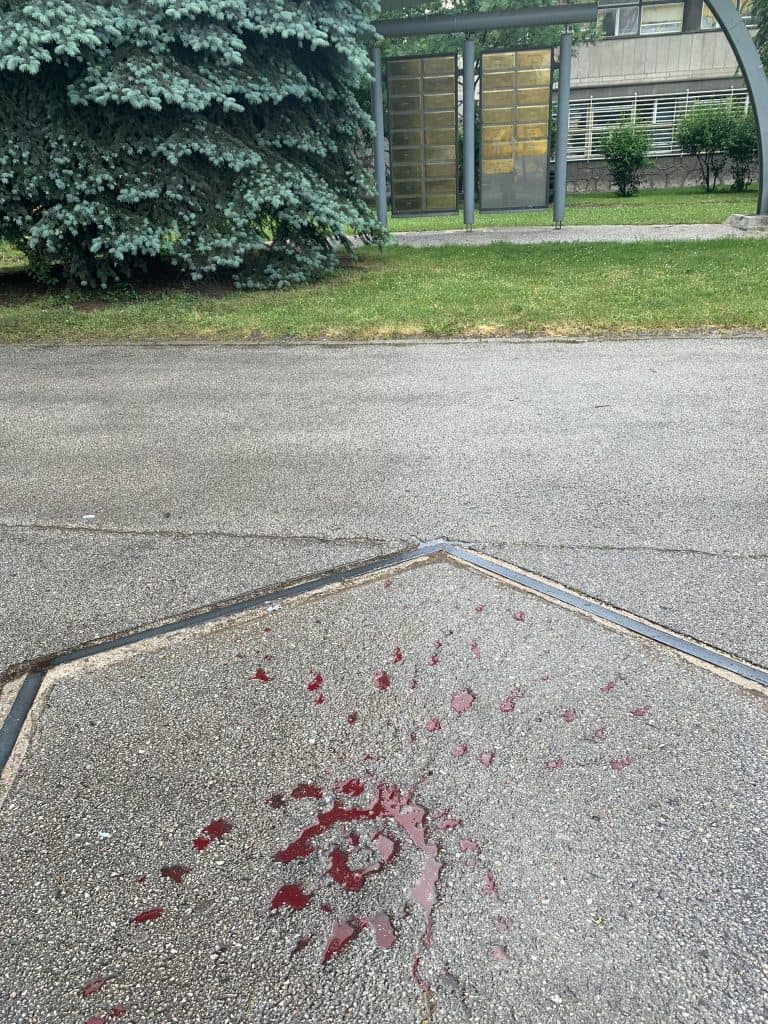
Sarajevo during the Bosnian War, from 1992 to 1995, suffered a long siege of the Bosnian Serb armies.
In the months leading up to the war, the forces of the JNA (Yugoslav People’s Army) began to deploy on the hills surrounding the city with artillery. On 2nd May 1992, Sarajevo was completely isolated from Bosnian Serb forces. The main roads leading into the city were blocked, as were the supplies of food and medicine. Services such as water, electricity and heating were cut.
Historians point to an average of more than 300 explosions per day during the course of the siege, with a maximum of 3,777 grenades dropped on 22th July 1993. Fires caused by the bullets seriously damaged the city’s facilities, including civilian and cultural buildings.
Among the most significant damages were those of the Palace of the Presidency of Bosnia and Herzegovina and the National Library, which burned completely along with thousands of texts no longer recoverable.
One of the main massacres carried out on the civilian population was that of 5th February 1994 at the Markale covered market. Saturday 5th February, around 12.10 a 120 mm mortar shell, fired from the hills surrounding the city, hit the market in full with the death of 68 people and the wounding of over 140.
Another infamous place is the Holiday Inn Hotel, opened during the Winter Olympics. The hotel is located along Avenue of Snipers and was used during the war as the headquarters of the international press. He was the same, however, constantly targeted by bullets and grenades fired from the nearby hills.
The ceasefire agreement was reached in October 1995, and the Dayton Agreement was signed in the same year to restore peace. A period of stabilization and a return to normality followed, with the Bosnian government not declaring an end to the siege of Sarajevo until 29th February 1996.
Following the war damage, the city was rebuilt even if today the signs of the conflict are still visible both in the architectural and cultural fields.
Everywhere in Sarajevo are the “Roses of Sarajevo”, places of impact of bombs during the siege. They are found on concrete and in the post-war years, the inhabitants of the city, painted them red in memory of the victims.









